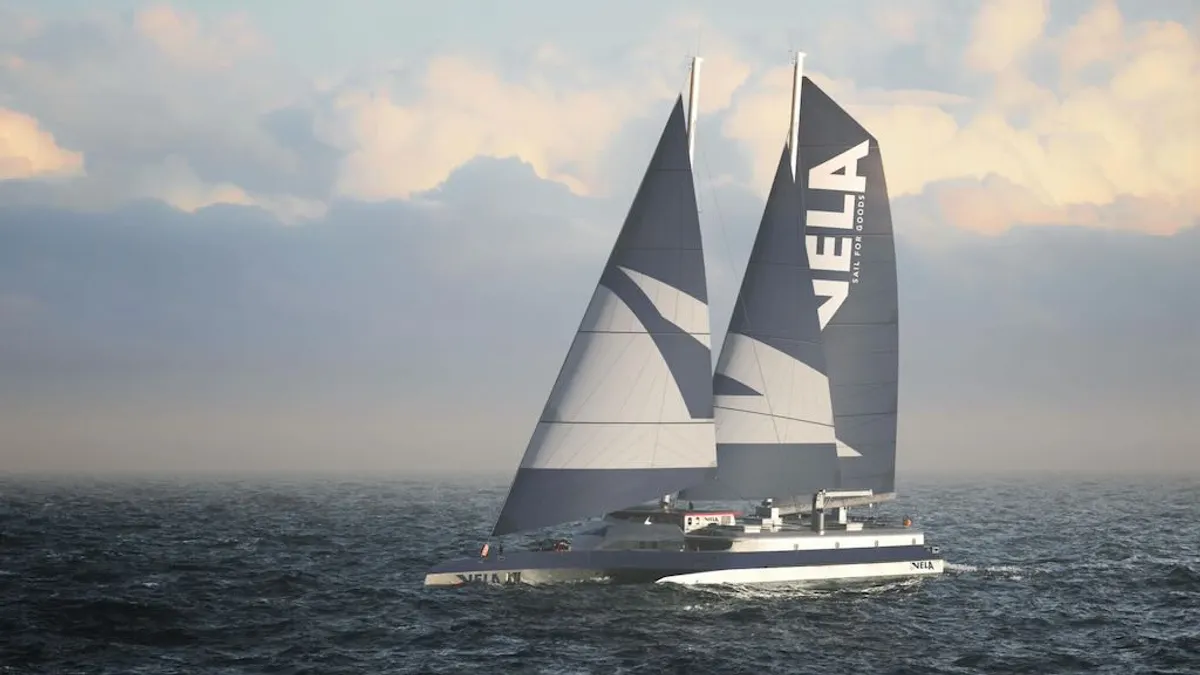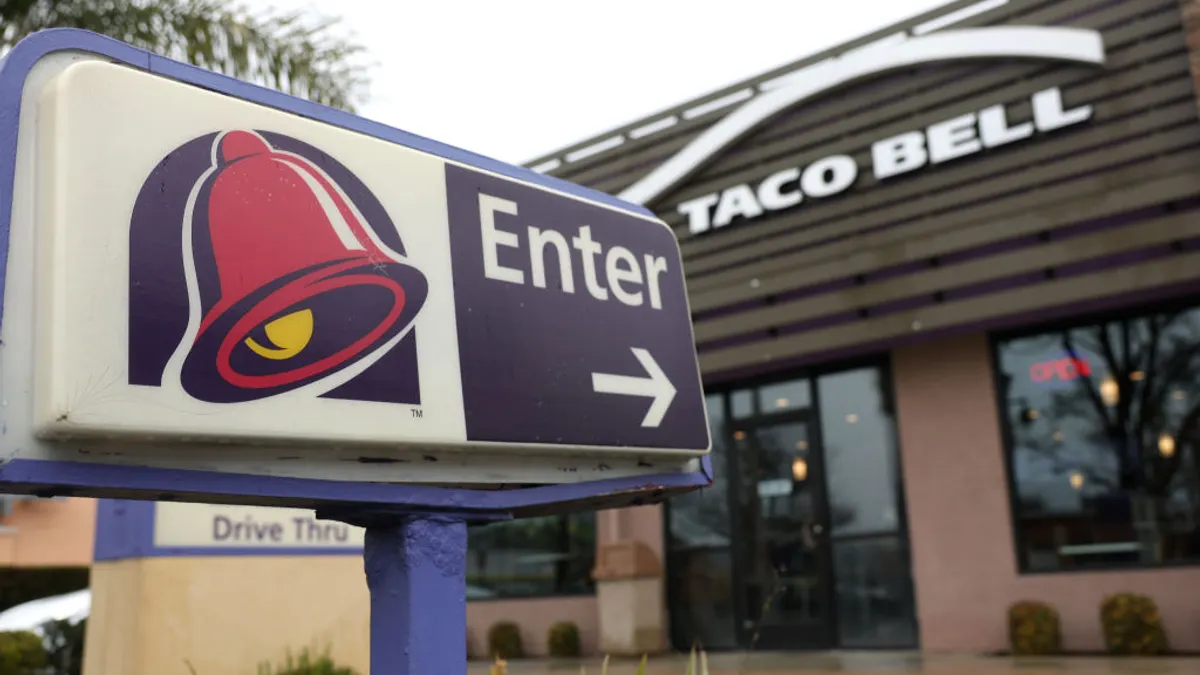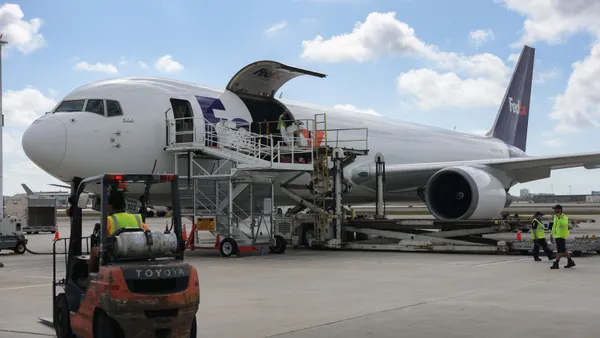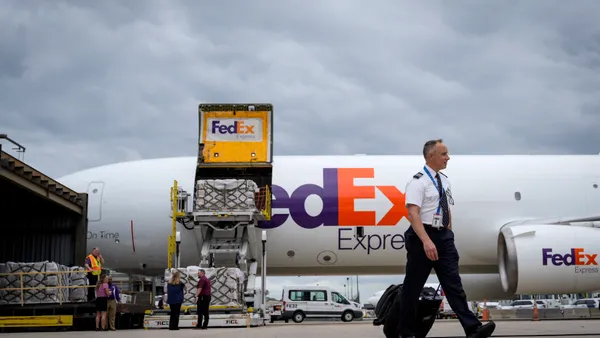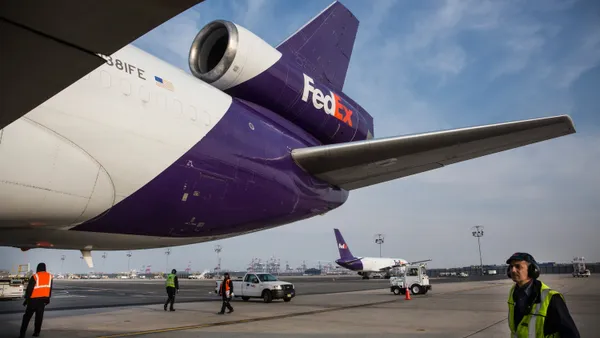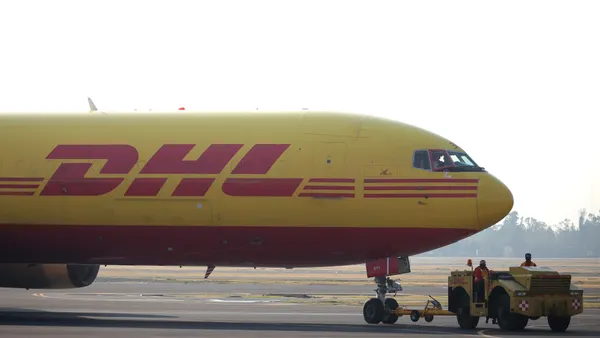Pharmaceutical company Takeda has partnered with shipping startup Vela to test whether its wind-powered cargo vessel, modeled after ocean-racing sailboats, can deliver temperature-sensitive drugs between France and the U.S. in around two weeks.
The first commercial voyage carrying Takeda's blood-disease medicine is scheduled for the fall of 2026 from the port city of Caen, France, to New York City, Michael Fernandez-Ferri, the carrier's co-founder and executive chair, said in an interview with Supply Chain Dive. The voyage will determine whether Vela can offer an alternative to slower container ships and expensive air cargo.
Takeda, based in Japan with operations in 80 countries, wants to ship around 5% of its volumes between France and New York in 2026, Xavier Baville, head of global distribution and logistics and customer experience at Takeda, said. The shipments will test whether Vela's refrigeration-equipped trimaran meets Good Distribution Practice standards set by national and international organizations for transporting drugs.
“It is a start to build a strong foundation, to confirm the concept is 100% GDP compliant and to start increasing our volumes as VELA’s capacity increases with more vessels,” Baville said in the email.
Potential benefits of using Vela's sailing vessel include Takeda meeting its goal of reaching net-zero greenhouse gas emissions by 2040, reducing the use of expensive air cargo, and sidestepping booking a 40-foot sea cargo container to ship fewer than six pallets of pharmaceuticals, Baville said.
“For several years, shifting from air to sea freight has been a priority for us,” he said.
Other companies are expected to join Vela’s first U.S. voyage, including apparel maker SMCP, winemaker Arvitis, and medical device manufacturer Echosens, a company spokesperson said in an email. Echosens wants to ship “100% of their volume with us” starting in Q4 2026, Fernandez-Ferri said.
Vela plans to offer future customers a port-to-port service that handles the gating process, loading and unloading and warehousing on both sides of a trip, Fernandez-Ferri said. The company plans to use secondary harbors to dodge the congestion in ports used by container ships.
“[We're] leveraging the fact that we have a smaller vessel, so we don't have to go to this main harbor,” Fernandez-Ferri said.
Vessel design
Vela expects to receive its first sailboat from shipbuilders in the Philippines next summer, Fernandez-Ferri said. The 220-foot-long vessel will have nearly 2,600 square feet of solar panels, two hydrogenerators, and two 171-foot masts used in ocean racing to reach an average travel speed of 14 knots, or roughly 16 mph, according to a joint press release from Takeda and Vela.
By 2028, Vela wants to add four more trimarans to its fleet to eventually reach a cadence of one round-trip a week between France and the U.S., aiming to transport 48,000 tons of goods per year, Fernandez-Ferri said. Target customers include companies shipping pharmaceuticals, medical devices, luxury goods and industrial parts.
“Speed is obviously of the utmost importance for shipping, because it means lead time. And lead time for the customer means inventory costs, right?” Fernandez-Ferri said. “The faster you go, the less cost you have for your inventory.”
Editor's note: This story was first published in our Logistics Weekly newsletter. Sign up here.



